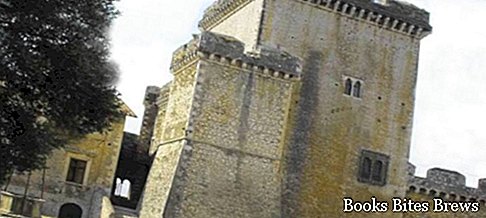What to see in Sermoneta, itinerary including the main monuments and places of interest, including Caetani Castle, Cathedral of Santa Maria Assunta, Church of San Michele Arcangelo, Convent of San Francesco and the historic center.
Tourist information
Located on the slopes of the Lepini Mountains and among the most fascinating medieval villages of Lazio, Sermoneta can be reached by going up an uphill road characterized by many curves which, starting from the Pontine Plain, offers various panoramas that, getting closer to the town, become more and more suggestive, especially when, just before reaching the destination, you have a vision of the country as a whole, enclosed entirely between majestic walls and developed around the castle.
The origins of Sermoneta date back to the early medieval period, when in this place placed in a privileged position, sheltered from the Saracen raids affecting the coastal strip and far from the plain where malaria raged, work began on the construction of a fortified village.
Starting from the thirteenth century, Sermoneta became a thriving fief of the Caetani, an important Lazio family who determined the vicissitudes of the village for a few centuries.
Thanks to the presence of the spectacular Caetani Castle, in an excellent state of conservation, Sermoneta has become a very popular tourist destination.
Probably built in the eleventh century, but later remodeled with various expansions completed in the fifteenth and sixteenth centuries, the castle has an imposing thirteenth-century square keep, as well as a vast and scenic courtyard, dominated by a magnificent palace, of small size, dating back to the fifteenth century and made of false ashlar.
Inside the building there are rooms with remarkable frescoes, probably made by a pupil of Pinturicchio, and prestigious medieval furnishings.
There are also secret passages and drawbridges outside, among which there is a long covered passage, called the "Great Battery, which allows access to the walkway by crossing a section of walls.
Once reached this position it is possible to admire a splendid panorama of the countryside and surrounding mountains.
During the summer, the Pontino Festival takes place in Sermoneta, an important festival of classical music attended by internationally renowned artists.
What see
The Cathedral of Santa Maria Assunta, built in Romanesque style before the tenth century above the remains of a Roman temple dedicated to the goddess Cybele, has a basilica plan with evident Cistercian references, due to the renovations carried out in the twelfth century.
Recommended readings- Anagni (Lazio): what to see
- Lazio: Sunday day trips
- Vetralla (Lazio): what to see
- Ciociaria (Lazio): what to see in the historic region
- Alatri (Lazio): what to see
The basilica is characterized by a narrow Gothic portico and a thin Romanesque bell tower made of stone and bricks.
In the interior with three naves with cross vaults there are numerous works of art, including two holy water fonts, an eighteenth-century wooden choir, the baroque crucifix placed in the altar shrine and the medieval one visible in one of the side chapels, in addition to valuable frescoes, among which those of Benozzo Gozzoli, located in the De Marchis Chapel and made in the fifteenth century, stand out.
The Church of San Michele Arcangelo is located in the oldest part of the town, in front of an interesting example of a tower house, which today houses a hotel.
This building of worship, dating back to the eleventh century and built on the ruins of a very ancient temple dedicated to the goddess Maia, includes a small porch and an interior with three very narrow naves, characterized by a ceiling with cross vaults and where they are an eighteenth-century organ, a seventeenth-century baptistery and a fresco of the Crucifixion are preserved.
Noteworthy are the fifteenth-century frescoes placed in the crypt.
In addition to the main monuments, the historic center as a whole also deserves a scrupulous visit.
In fact, walking through its narrow alleys, bordered by ancient houses built in limestone, it is possible to admire architectural and decorative elements of great value, including mullioned windows, coats of arms, rusticated portals, round and pointed arches, loggias and tower houses , as well as buildings of great historical and artistic value, including the Loggia dei Mercanti with its arches, the fifteenth-century Church of the Annunciation, the Town Hall and the Jewish Synagogue.
Not far from the town there is the Convent of San Francesco, a twelfth-century monastic complex, born as a Templar fortress, which remained there until 1312, the year in which the order was suppressed.
After them several orders of friars followed, before the convent became definitively the property of the state property.
In the square in front there is a huge holm oak, planted in 1495 at the request of Pope Alexander VI to celebrate the donation of the convent to the Friars Minor.
The interior of the church has a single nave, with cross vaults and three chapels located on the right side, with sixteenth and seventeenth century frescoes, including many made by the students of the Siciolante.
Also noteworthy is the large square-covered cloister with cross vaults, where you can admire 28 frescoed lunettes illustrating scenes from the life of San Francesco d'Assisi, created by Angelo Guerra from Anagni in 1602.
In the refectory, the great fresco of the Last Supper, dating back to 1586 and made by Pomarancio on behalf of Cardinal Enrico Caetani, deserves to be seen.




